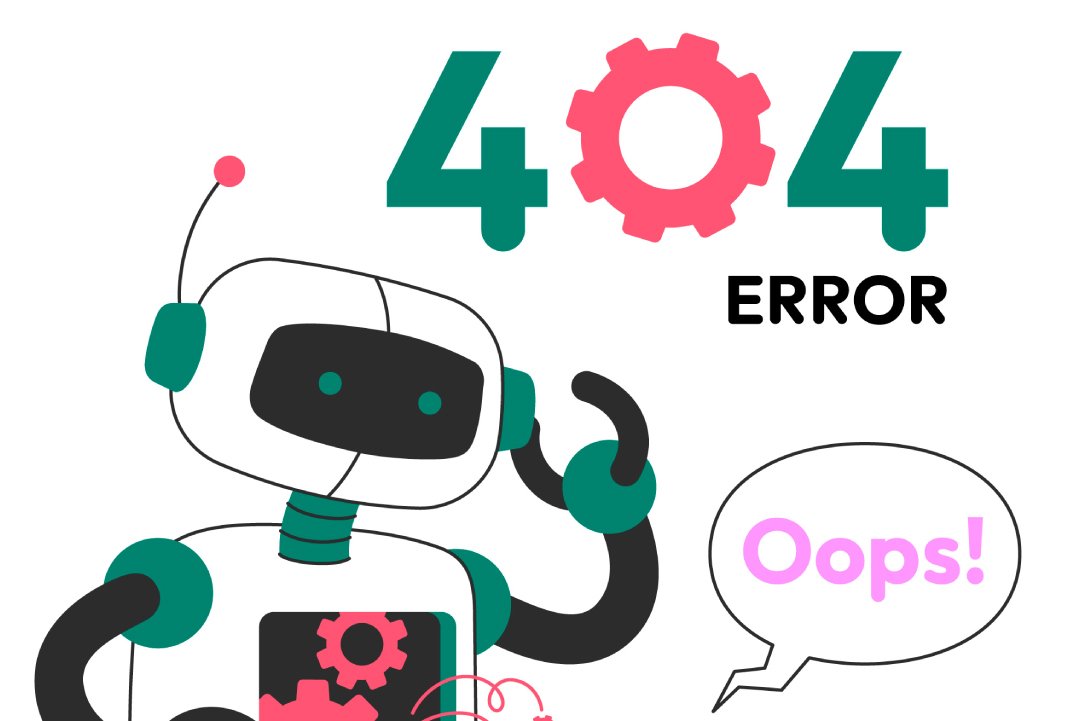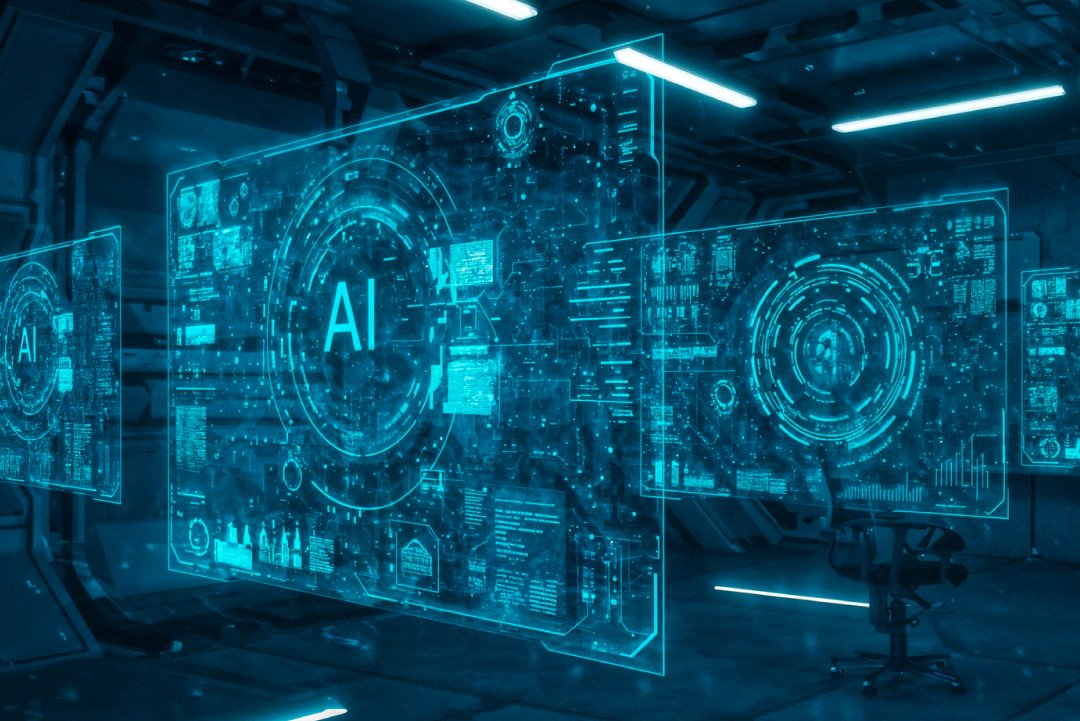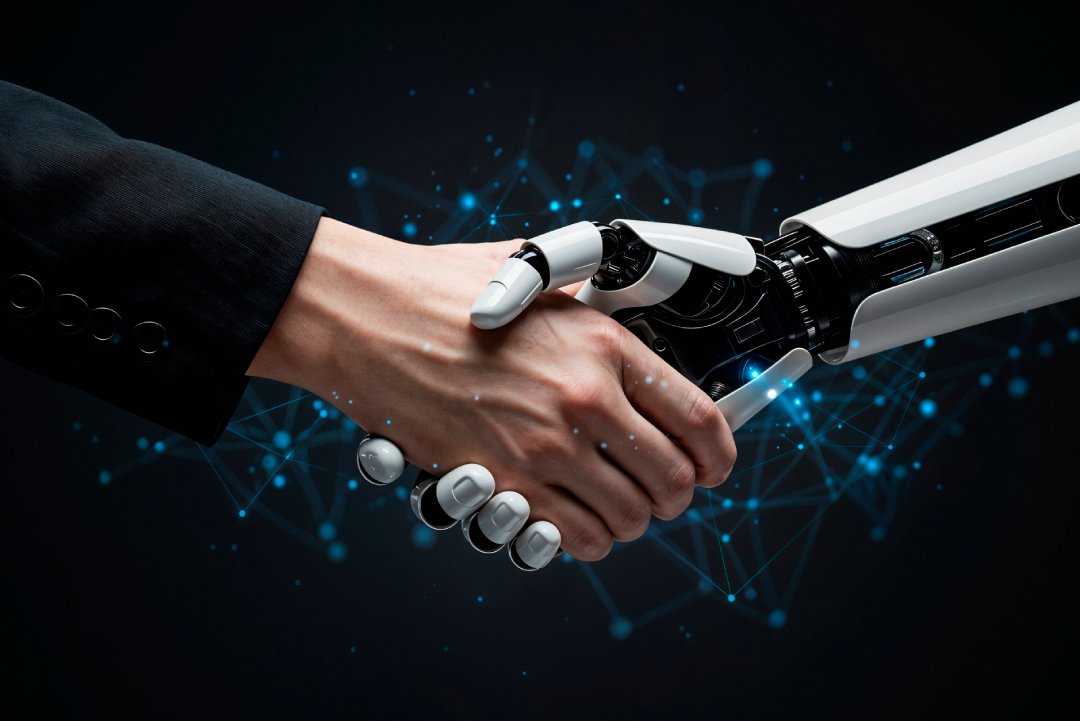- Introduction
- Code Generation and Completion: Automating Routine Programming Tasks
- Debugging and Error Detection: Enhancing Code Quality
- Predictive Analytics in Software Development: Data-Driven Decision Making
- Automated Testing: Increasing Coverage and Reliability
- Natural Language Processing (NLP) for Documentation: Streamlining Technical Communication
- Intelligent DevOps Automation: Optimizing Development Operations
- Enhanced Security with AI: Proactive Protection
- AI-Driven Design Prototyping: Accelerating UI/UX Development
- Legacy Code Modernization: Revitalizing Outdated Systems
-
AI-Enhanced Collaboration Tools: Improving Team Communication
- Key Tools and Applications
- Communication Enhancement
- Team Analytics and Insights
- Cross-functional Integration
- Case Study: Enterprise Collaboration (2024)
- Conclusion: The Future Role of AI in Software Engineering
- Next Generation AI Development Tools
- Ethical Considerations and Human-AI Partnership
- Industry Transformation
- Additional Resources
Introduction
Artificial intelligence (AI) is dramatically transforming nearly every industry, and software engineering is no exception. From automating repetitive tasks to solving complex problems, AI is revolutionizing how software is designed, developed, and deployed. With advancements in machine learning, natural language processing, and predictive analytics, software engineers are leveraging AI to enhance efficiency, improve code quality, and create innovative applications.
The adoption of AI in software engineering is not just about automating workflows—it’s about empowering engineers to tackle challenges that were previously considered insurmountable. AI tools are enabling more accurate predictions, smarter algorithms, and enhanced collaboration between machines and humans. By integrating AI, software engineers are building systems that can learn, adapt, and evolve, making software more resilient and intelligent.
This article explores 10 key ways software engineers are using AI to push the boundaries of what’s possible in technology.
Code Generation and Completion: Automating Routine Programming Tasks

AI tools such as GitHub Copilot and Tabnine are transforming software development by automatically generating code snippets. They assist with boilerplate code, API integrations, and rapid prototyping, reducing development time and cognitive load. These systems analyze vast repositories of code to understand patterns and best practices, then apply this knowledge to generate contextually appropriate solutions.
Key Tools and Applications
- GitHub Copilot: Generates entire functions from comments and contextual hints
- Cursor: AI-powered code editor with context-aware suggestions and code explanation
- Tabnine: Provides intelligent code completions across languages with team-specific learning
- Amazon CodeWhisperer: Generates recommendations based on comments and integrates security scanning
Real-World Applications
- Full Function Generation: Creating complete implementations from natural language descriptions
- Language Translation: Converting code between programming languages while preserving functionality
- API Integration: Automating connections to third-party services with minimal developer input
Case Study: Productivity Gains (2023-2024)
A 2024 study by DevMetrics found that teams using AI code generation tools experienced a 35% increase in feature delivery speed. In 2023, Shopify reported that after implementing GitHub Copilot enterprise-wide, their engineering team saw a 30% reduction in time spent on routine coding tasks and a 23% increase in developer satisfaction scores. Junior developers particularly benefited, with onboarding time decreasing by 45% compared to pre-AI tool implementation.
Debugging and Error Detection: Enhancing Code Quality

AI systems analyze codebases to detect syntax issues, logic flaws, and security vulnerabilities. This accelerates the debugging process and enhances code quality.
Key Tools and Applications
Integration with Development Workflows
- IDE plugins provide instant feedback before code is committed
- CI/CD integration prevents problematic code from reaching production
- Version control analysis identifies which changes commonly introduce bugs
Business Impact
- Reduces time-to-resolution for critical bugs by up to 60%
- Decreases the cost of fixing defects by identifying them earlier
- Improves overall software quality and security posture
Predictive Analytics in Software Development: Data-Driven Decision Making

Platforms apply predictive analytics to estimate project timelines and identify risks, helping developers plan more effectively.
Key Tools and Applications
- Pluralsight Flow: Analyzes developer activity to predict outcomes
- LinearB: Forecasts delivery timelines and identifies bottlenecks
- Jellyfish: Provides engineering metrics and predictive insights
Data-Driven Project Management
- AI analyzes historical data to generate more accurate delivery timelines
- Advanced algorithms recommend optimal team compositions based on skills
- Predictive models identify potential roadblocks before they impact development
Case Study: Financial Services Implementation (2023-2024)
A global financial services company implemented LinearB‘s AI-driven engineering metrics platform in 2023, achieving a 37% improvement in sprint completion accuracy and 45% more accurate delivery estimations for client-facing projects.
Automated Testing: Increasing Coverage and Reliability

AI automates the generation and execution of test cases, improving test coverage and shortening release cycles. Modern testing frameworks leverage machine learning to understand application behavior patterns and create comprehensive test suites that would be time-consuming to develop manually.
Key Tools and Applications
- Testim: AI-powered test automation with stable UI tests that resist changes
- Playwright: Microsoft’s end-to-end testing framework with AI-enhanced capabilities
- Cypress: Modern testing tool with AI integration for web applications
- Applitools: Visual AI for UI validation across browsers and devices
- mabl: Intelligent test automation platform with low-code interface
Self-Generating Test Suites
- AI systems observe application usage to generate tests that mirror real user behavior
- Machine learning creates test variants to uncover edge cases and improve coverage
- Visual AI detects unintended UI changes automatically with pixel-perfect comparison
- NLP processes test requirements to generate functional test cases automatically
Intelligent Test Maintenance
- Self-healing tests adapt when UI elements change, reducing maintenance burden
- AI prioritizes tests most relevant to modified functionality, optimizing execution time
- Machine learning identifies inconsistent “flaky” tests and suggests stabilization approaches
- Automated impact analysis determines which tests need to run after code changes
Industry Adoption Metrics
Organizations implementing AI-driven test automation report:
- 60% reduction in test maintenance effort
- 45% improvement in defect detection rates
- 30% faster test execution times through intelligent test selection
Case Study: E-commerce Platform (2022-2023)
An e-commerce platform implemented Playwright with AI capabilities in 2022, reporting a 78% reduction in flaky tests and 90% faster identification of visual regression issues. This allowed them to increase deployment frequency from bi-weekly to daily releases while maintaining quality standards.
Natural Language Processing (NLP) for Documentation: Streamlining Technical Communication

NLP-powered tools auto-generate documentation for APIs, user manuals, and internal systems, boosting productivity and communication.
Key Tools and Applications
- Glean: AI-powered technical documentation platform
- OpenAI GPT-4: Summarizes complex technical concepts
- Swimm: Specialized system for code-coupled documentation
Documentation Generation Capabilities
- NLP models analyze code to generate human-readable documentation
- Automated API documentation with examples and edge cases
- AI generates READMEs, configuration documentation, and changelogs
Case Study: Developer Platform Documentation (2022)
A major cloud provider implemented AI-driven documentation generation, reducing documentation creation time by 75% and improving accuracy by 40% through consistent terminology.
Intelligent DevOps Automation: Optimizing Development Operations

AI integration in DevOps automates CI/CD processes, monitors performance, and predicts failures.
Key Tools and Applications
- Ansible AI: Automates infrastructure management
- Harness: Machine learning for deployment verification
- IBM Watson AIOps: Anomaly detection and remediation
Infrastructure and Deployment Management
- AI optimizes resource provisioning based on application needs
- Machine learning identifies optimal deployment windows to minimize impact
- Automated canary analysis and rollbacks without human intervention
Case Study: Streaming Service (2024)
A global streaming service adopted IBM Watson AIOps in 2024, achieving 70% reduction in false positive alerts and 85% faster root cause identification for distributed system failures.
Enhanced Security with AI: Proactive Protection

AI security tools identify threats in real-time by detecting anomalies in system behavior. These advanced systems can recognize patterns that would be impossible for humans to monitor continuously, providing a proactive defense against evolving cyber threats.
Key Tools and Applications
- Darktrace: Uses AI to detect and respond to cyber threats in real-time through behavioral analysis
- CrowdStrike: Employs machine learning for endpoint protection and threat hunting
- Palo Alto Networks Cortex XDR: AI-integrated network security with cross-data analysis
- SentinelOne: Autonomous AI-powered endpoint security with automated remediation
- Cybereason: AI-driven endpoint detection with operation-centric approach
Security Implementation Approaches
- Behavioral Analysis: AI establishes baseline user and system behaviors to detect deviations
- Predictive Threat Intelligence: Machine learning models identify emerging attack patterns before they become widespread
- Zero-Day Vulnerability Detection: AI recognizes exploit attempts targeting previously unknown vulnerabilities
- Automated Incident Response: Systems contain and remediate threats without human intervention
- SecDevOps Integration: AI security tools integrate directly into development workflows for “shift-left” security
Advanced Detection Capabilities
- Machine learning models trained on billions of attack patterns can identify novel threats
- NLP analyzes unusual communication patterns that might indicate command-and-control activity
- Unsupervised learning algorithms detect anomalies without prior training on specific attack types
- Graph-based AI detects lateral movement and privilege escalation within networks
Case Study: Healthcare Data Protection (2024)
A healthcare provider network deployed CrowdStrike‘s AI-driven security in 2024, blocking 99.7% of attempted ransomware attacks and reducing security incident investigation time from days to minutes. The system automatically quarantined affected systems and provided detailed attack chain analysis, enabling rapid remediation of root causes rather than just symptoms. This implementation helped them achieve HIPAA compliance while reducing security personnel requirements by 35%.
AI-Driven Design Prototyping: Accelerating UI/UX Development

AI assists in quickly generating UI mockups, enhancing communication between developers and stakeholders.
Key Tools and Applications
- Figma with AI plugins: ML-powered UI design generation
- Adobe Firefly: AI for creative workflows
- Uizard: Transforms sketches into working designs
Design-to-Code Capabilities
- AI converts design files directly into frontend code
- Machine learning ensures designs adhere to established design systems
- Automated accessibility verification before implementation
Case Study: Mobile App Development (2024)
A mobile application team implemented Adobe Firefly for UI/UX design, reducing design-to-code conversion time by 65% and accelerating the design approval process by 75%.
Legacy Code Modernization: Revitalizing Outdated Systems

AI aids in refactoring outdated codebases by identifying inefficiencies and suggesting modern equivalents.
Key Tools and Applications
- IBM Application Modernization: AI-assisted migration
- OpenRewrite: Automated refactoring tools
- Sonarsource: Code quality and security platform
Modernization Strategies
- AI identifies unused code and inefficient patterns
- Machine learning assists in translating between programming languages
- Automated transformation from monolithic to microservice architectures
Case Study: Government Agency Modernization (2023-2024)
A government agency utilized IBM’s Application Modernization AI tools to migrate citizen service applications from mainframe to cloud-native architecture, completing migration 18 months ahead of schedule and reducing operating costs by 62%.
AI-Enhanced Collaboration Tools: Improving Team Communication

AI-augmented platforms streamline team communication by summarizing meetings and highlighting action items. These tools address the growing challenge of information overload in software development teams, helping engineers find relevant knowledge and maintain productivity across distributed workforces.
Key Tools and Applications
- Slack AI integrations: Smart summaries, search, and context-aware recommendations
- Microsoft Teams AI: Meeting transcription, translation, and action item extraction
- Notion AI: Collaborative documentation assistance with content generation
- Zoom AI Companion: Meeting summaries, sentiment analysis, and follow-up tracking
- Asana Intelligence: Project management automation with work prioritization
Communication Enhancement
- Intelligent Meeting Management: AI creates agendas, transcribes conversations, and generates comprehensive summaries
- Context-Preservation: Systems maintain knowledge continuity across asynchronous discussions
- Multilingual Support: Real-time translation enables seamless global collaboration
- Knowledge Surfacing: AI proactively suggests relevant documentation and previous discussions
- Voice-to-Documentation: Automatic conversion of verbal discussions into structured documentation
Team Analytics and Insights
- AI identifies communication patterns and potential bottlenecks between teams
- Machine learning detects early signs of team burnout or engagement issues
- Sentiment analysis gauges reactions to organizational changes and initiatives
- Network analysis reveals knowledge silos and opportunities for cross-team collaboration
Cross-functional Integration
- AI bridges communication gaps between technical and non-technical stakeholders
- Automated translation of technical jargon into business-oriented language
- Integration with development tools creates traceability between discussions and implementations
- Knowledge graphs connect related conversations across different platforms and timeframes
Case Study: Enterprise Collaboration (2024)
A Fortune 500 company deployed Slack AI across their technology division in 2024, decreasing information search time by 70% and reducing onboarding time for new team members from 6 weeks to 3 weeks. The system automatically created and maintained a searchable knowledge base from conversations, identified expertise across the organization, and facilitated connections between team members with complementary skills. This resulted in a 45% improvement in cross-team collaboration and a 25% reduction in duplicate work efforts.
Conclusion: The Future Role of AI in Software Engineering
AI has transformed software engineering by enabling developers to focus on solving complex problems while automating routine tasks. These advancements improve efficiency and open new possibilities for what software can achieve. As AI capabilities continue to evolve, we’re witnessing a fundamental shift in how software is created, maintained, and enhanced.
Next Generation AI Development Tools
- Autonomous Debugging: Systems that not only detect but also fix bugs without human intervention, learning from historical code corrections
- End-to-End Development: AI that generates complete applications from requirements specifications, handling everything from architecture to implementation
- Personalized AI Assistants: Tools that learn individual developer styles, preferences, and strengths to provide customized assistance
- Code Synthesis: Advanced systems that create novel algorithms based on desired outcomes rather than explicit instructions
Ethical Considerations and Human-AI Partnership
- Responsible AI Development: Tools that help ensure generated code follows ethical guidelines and accessibility standards
- Explainable AI: Systems that can articulate their reasoning when suggesting code changes or architectural decisions
- Augmented Expertise: AI that amplifies developer knowledge by providing contextual learning resources during coding
- Collaborative Intelligence: Frameworks that optimize when to delegate tasks to humans versus AI based on respective strengths
Industry Transformation
- New Developer Roles: The emergence of AI prompt engineers, AI trainers, and human-AI collaboration specialists
- Skill Evolution: Shifting focus from routine coding to creative problem-solving, domain expertise, and systems thinking
- Democratization of Development: Making software creation accessible to non-programmers through natural language interfaces
- Continuous Learning Systems: Software that evolves through usage patterns without explicit reprogramming
The most successful software engineers will view AI not as a replacement but as a powerful collaborator—augmenting human creativity, domain knowledge, and ethical judgment with machine precision, pattern recognition, and tireless assistance. This human-AI partnership represents the future of software engineering: a symbiotic relationship that produces better outcomes than either could achieve alone.
As AI capabilities advance, the boundary between human and machine contributions will continue to blur, creating a new paradigm where software engineering becomes increasingly focused on defining problems precisely and guiding AI systems toward optimal solutions, rather than implementing every detail manually. Organizations that successfully navigate this transition will gain significant competitive advantages through faster innovation cycles, higher quality software, and more efficient resource utilization.
Additional Resources
Industry Research and Reports
- State of AI in Software Development – Comprehensive annual report on AI adoption trends
- IEEE Software Engineering Institute – Research on AI integration in software engineering
- McKinsey’s The State of AI – Broader industry perspective on AI adoption
- Stack Overflow Developer Survey – Annual insights on developer tool adoption including AI
- GitHub Octoverse Report – Data on AI usage in open source development
Learning Platforms and Courses
- Coursera’s AI for Everyone – Introduction to AI concepts for software professionals
- O’Reilly’s AI in Software Engineering – Practical guides for implementing AI in development workflows
- GitHub Learning Lab – Hands-on tutorials for AI-assisted development
- DeepLearning.AI – Advanced courses on machine learning for developers
- Prompt Engineering Guide – Resources for effective AI prompting techniques
Communities and Forums
- AI Engineers Slack Community – Discussion forum for AI in software engineering
- DevOps/AI Integration Group – Focus on AI for automation and operations
- Stack Overflow AI Tags – Q&A on AI implementation challenges
- GitHub Copilot Community – Discussions on effective AI pair programming
- AI/ML with Microsoft Azure – Blog and community resources
Key Collaboration Tools
- Slack AI integrations: Team communication with smart summaries and insights
- Microsoft Teams AI: Meeting transcription, translation, and action items
- Zoom AI Companion: Meeting summaries and follow-ups
- Asana Intelligence: AI-powered project management and prioritization
- Almanac: Collaborative document creation with AI assistance
Future Security Developments
- AI vs. AI Security: Defensive systems evolving to counter AI-powered attacks
- Privacy-Preserving AI: Security tools that operate without compromising sensitive data
- Supply Chain Security: Advanced systems to protect increasingly complex software dependencies
- Continuous Compliance Monitoring: AI-driven regulatory and standards adherence verification

